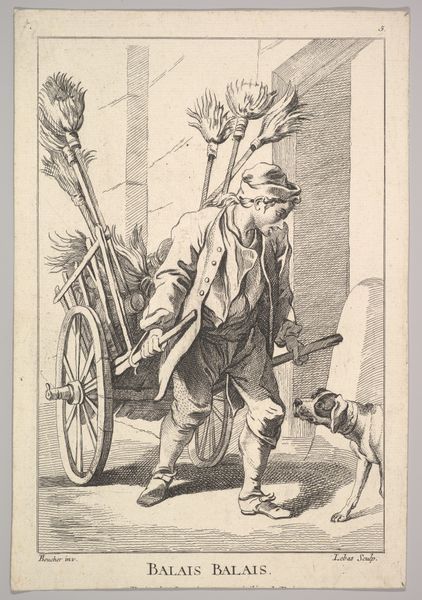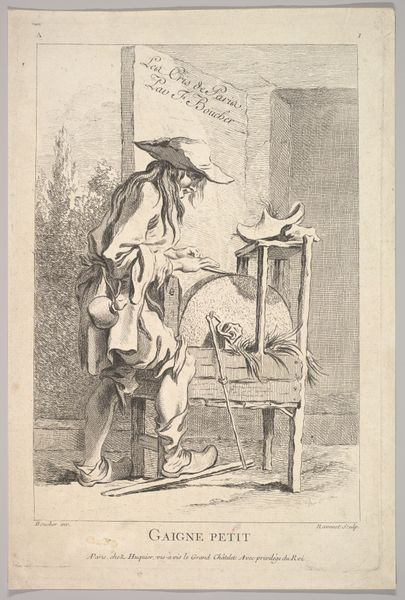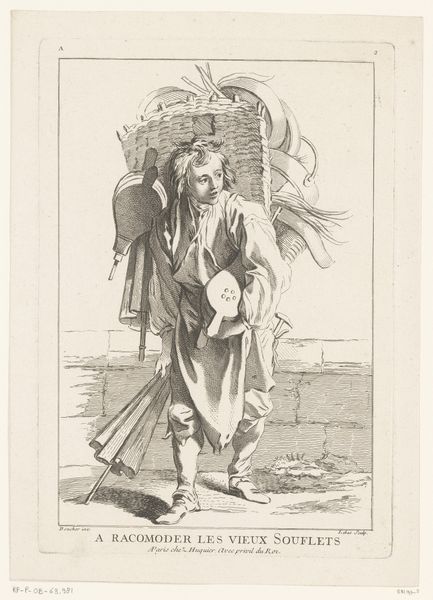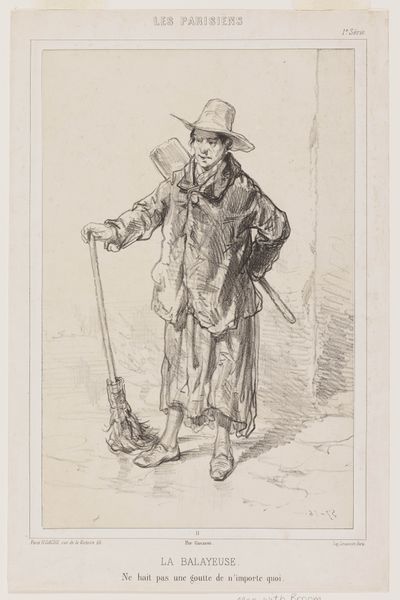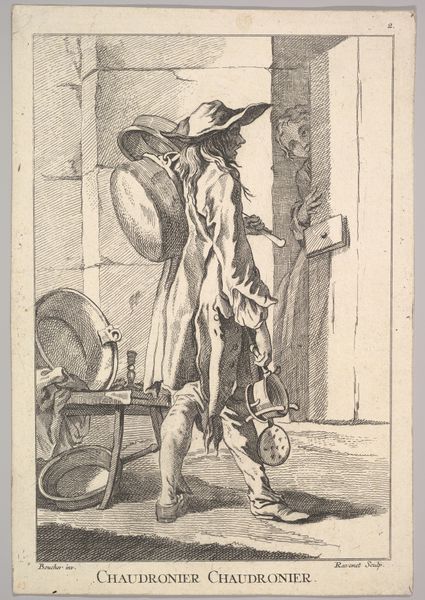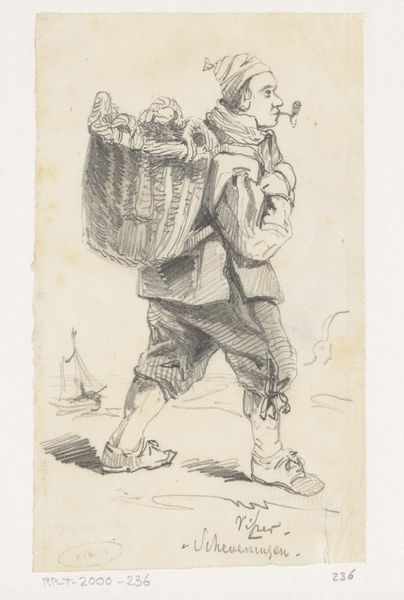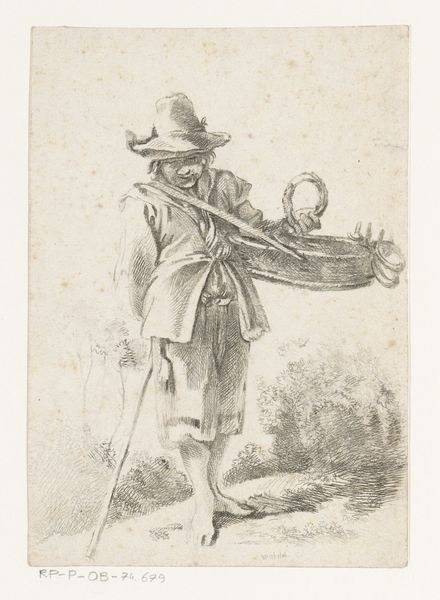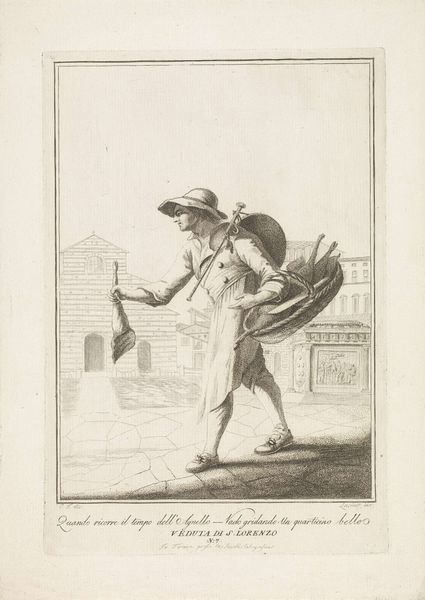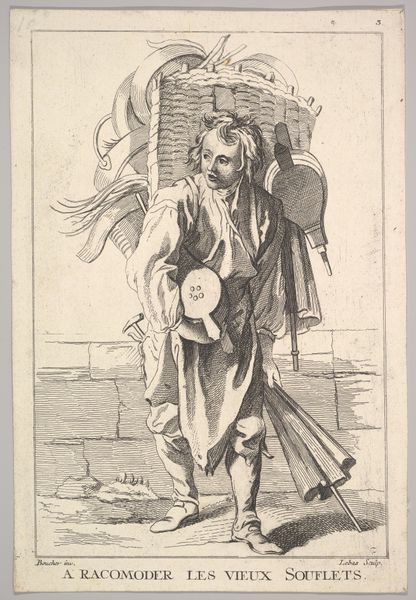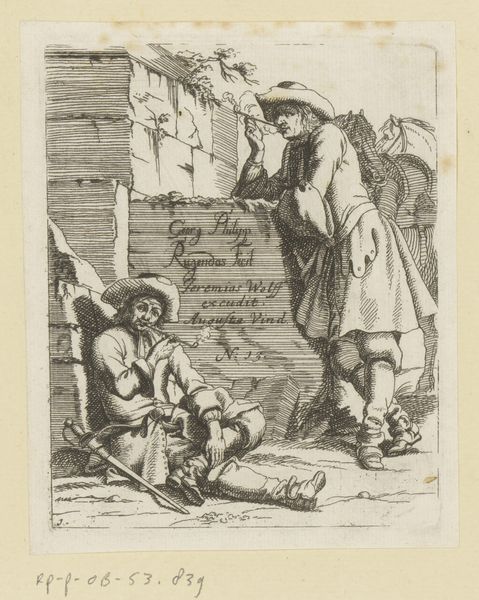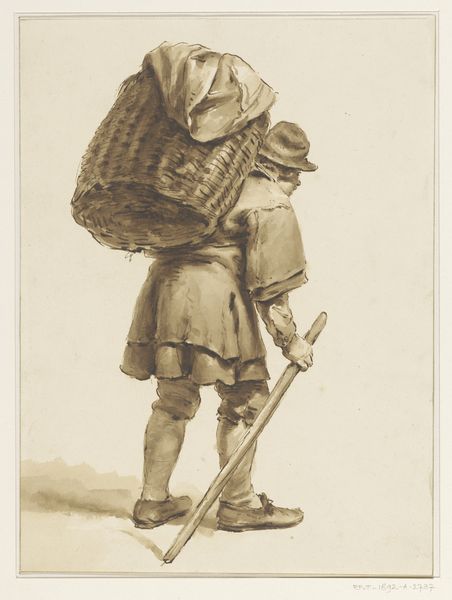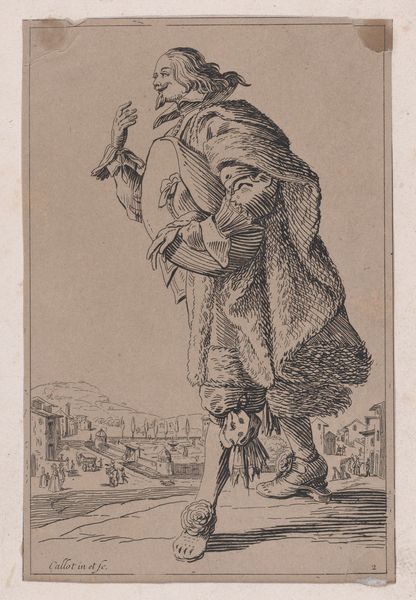
print, engraving
#
portrait
#
baroque
# print
#
figuration
#
line
#
cityscape
#
genre-painting
#
engraving
#
realism
Dimensions: height 284 mm, width 194 mm
Copyright: Rijks Museum: Open Domain
Editor: So, this is Jacques Philippe Le Bas's "Street Vendor with Brooms," from around 1736. It’s an engraving, so it's all lines, but they give it a very real feel. It looks like a slice of everyday life. What catches your eye about this piece? Curator: What I find compelling is the intersection of class, labor, and visibility within the urban landscape. Consider the image as a commentary on the social stratification of 18th-century Paris. How does Le Bas portray the vendor's agency, or lack thereof, within the system? Editor: Well, he’s clearly working hard. He’s pulling this cart full of brooms and even has a dog on a leash to guide him. He seems burdened, but focused. Curator: Precisely. Notice how the cityscape, rendered with such detailed line work, simultaneously situates him within and isolates him from the broader social fabric. Do you see this as a celebration of labor, or perhaps a more critical observation of the economic disparities inherent in that society? How might this print have functioned as a form of social critique, circulating amongst different classes with potentially divergent interpretations? Editor: I hadn’t thought of it as critical. I suppose the very fact that this everyday scene is considered worthy of art… maybe that *is* a kind of commentary. Like, “Look at this person most of us ignore." Curator: Exactly! And who is the intended audience for this image? Does the artist elevate the subject, or reinforce existing hierarchies? Let's think about how gender also operates. Are there representations of similar female laborers? How are these depictions different? Editor: This really gives me a lot to think about regarding the relationship between art and society. I learned more about how art both captures a moment in time and comments on it. Curator: Indeed. By unpacking these layers, we understand how visual culture participates in shaping our perceptions of the past and informing present-day dialogues.
Comments
No comments
Be the first to comment and join the conversation on the ultimate creative platform.
